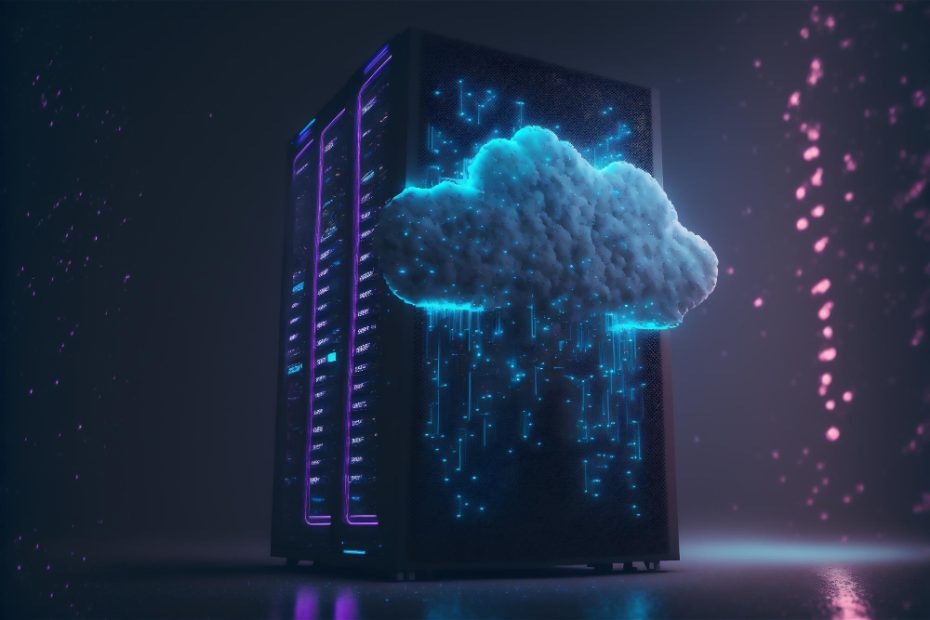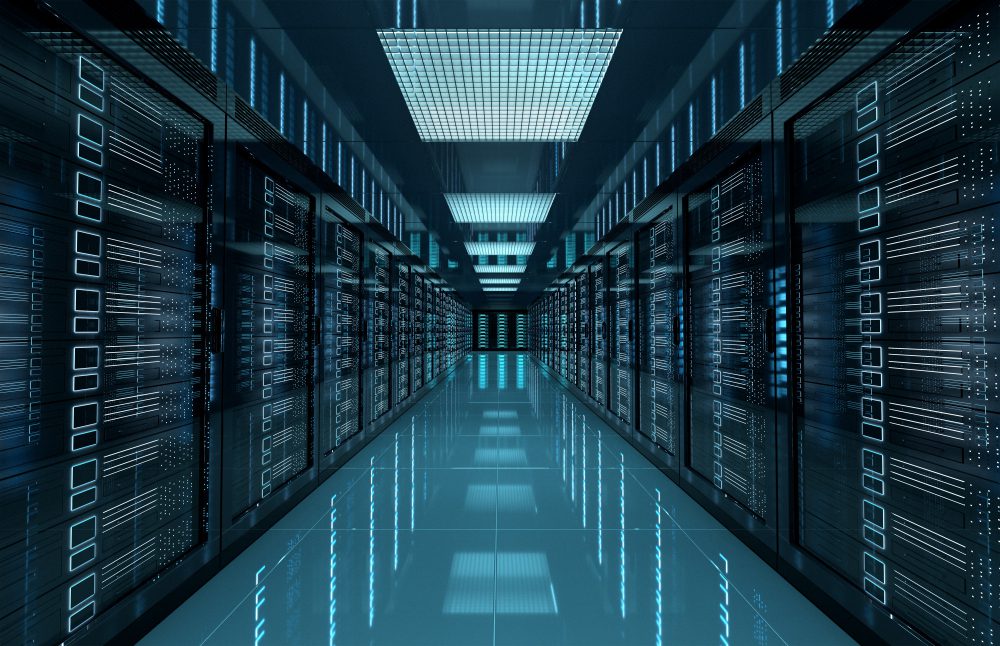How do I access data from my NAS drive?
Accessing data from a NAS (Network Attached Storage) drive is a fundamental task for individuals and businesses alike. With the increasing need for storing and managing large amounts of digital content, NAS drives have become a popular solution due to their scalability and ease of use. In this article, we will explore different methods to access data from your NAS drive, providing step-by-step instructions and valuable tips.
Method 1: File Explorer (Windows)
Steps:
- Connect your NAS drive to your local network and ensure it is powered on.
- Open File Explorer on your Windows computer.
- In the address bar, type in the network path of your NAS drive. This typically starts with “\\”, followed by the IP address or hostname of the NAS drive.
- Press Enter or click the arrow next to the address bar to navigate to the NAS drive.
- You should now see the shared folders and files on your NAS drive. From here, you can copy, move, or edit the data as needed.
Method 2: Finder (Mac)
Steps:
- Connect your NAS drive to your local network and power it on.
- Click on the Finder icon in your Mac’s dock to open Finder.
- In the Finder menu, click on “Go” and select “Connect to Server” (or use the shortcut Command+K).
- In the “Server Address” field, enter the network path of your NAS drive, starting with “smb://” followed by the IP address or hostname.
- Click “Connect” and enter your NAS drive’s login credentials if prompted.
- After successful authentication, you will see the shared folders and files on your NAS drive in the Finder window.
Method 3: Mobile Apps
Steps:
- Install the appropriate NAS app from the App Store (iOS) or Google Play Store (Android) on your mobile device.
- Open the NAS app and follow the instructions to connect it to your NAS drive.
- Once connected, you can access your NAS drive’s data through the mobile app, allowing you to browse, download, and upload files on the go.
Note: The exact steps may vary depending on the specific NAS drive model and software. It is recommended to refer to the manufacturer’s documentation for detailed instructions tailored to your device.
“Accessing data from a NAS drive provides the flexibility and convenience to retrieve your important files from anywhere within your local network.”
Whether you are accessing your NAS drive from a Windows computer, Mac, or mobile device, it is crucial to ensure that your NAS drive is secured with strong passwords and updated firmware to protect your data from unauthorized access.
In conclusion, accessing data from your NAS drive is a straightforward process that involves connecting to the drive through File Explorer (Windows), Finder (Mac), or mobile apps. By following the provided steps, you can conveniently access, manage, and safeguard your valuable data stored on your NAS drive.
What is a NAS and do I need one?
A Network Attached Storage (NAS) device is a type of storage solution that connects to your home or office network, allowing multiple users to access and share files over the network. It is essentially a dedicated file server that provides centralized storage for various devices such as computers, smartphones, and tablets.
Benefits of a NAS
There are several benefits to having a NAS in your network:
- Centralized storage: A NAS allows you to store all your files in one place, making it easy to access and manage your files from any device connected to the network.
- Data backup: NAS devices often have built-in backup features that automatically back up your data on a regular basis, providing an extra layer of protection against data loss.
- File sharing: With a NAS, you can easily share files with other members of your network. This is particularly useful in a home or office environment where collaboration and sharing of files are common.
- Media streaming: Many NAS devices come with media server capabilities, allowing you to stream music, videos, and photos to compatible devices such as smart TVs, gaming consoles, and media players.
Do you need a NAS?
Whether you need a NAS depends on your specific requirements and usage patterns. If you find yourself constantly running out of storage space on your devices or if you need a centralized storage solution for your family or small office, a NAS can be a valuable investment.
“A NAS can provide peace of mind by ensuring that your data is safe and easily accessible.”
Additionally, if you need an efficient way to share files and collaborate with others, a NAS can greatly simplify the process. It eliminates the need for physical file transfers or relying on cloud storage providers.
However, if you only have basic storage needs and don’t require advanced features like media streaming or remote access, a NAS may not be necessary. In such cases, cloud storage services or external hard drives could be sufficient alternatives.
Can Windows 10 be a file server?
Windows 10 is primarily known as an operating system for personal computers, but it can also function as a file server. While it may not have all the advanced features and capabilities of dedicated server operating systems like Windows Server, it can still serve files to other devices on a network.
Setting up Windows 10 as a file server
To configure Windows 10 as a file server, you need to enable the appropriate file sharing settings. Start by opening the Control Panel and navigating to the “Network and Sharing Center” section. From there, click on “Change advanced sharing settings” and make sure that network discovery, file and printer sharing, and public folder sharing are enabled.
Next, create a folder on your Windows 10 computer that will act as the shared folder. Right-click on the folder, select “Properties,” and go to the “Sharing” tab. Click on “Advanced Sharing” and check the box that says “Share this folder.” You can then customize the permissions for different users or groups.
Limitations of using Windows 10 as a file server
While Windows 10 can serve as a file server, it has some limitations compared to dedicated server operating systems. One major limitation is the maximum number of simultaneous connections. Windows 10 Home edition allows a maximum of 20 concurrent connections, while Windows 10 Pro and Enterprise editions support up to 10 simultaneous connections.
Note: If you require more concurrent connections or advanced file server features, it is recommended to use Windows Server instead.
Another limitation is the lack of support for enterprise-level features like Active Directory and Group Policy. These features are essential for managing large networks and user permissions. Additionally, performance and scalability may be limited on Windows 10 compared to dedicated server operating systems.
What is the difference between file server and storage server?
A file server and a storage server are two different types of servers that serve specific purposes in managing and storing data. While they may have some overlapping functionality, understanding their differences is crucial for optimizing data management in an organization.
File Server:
A file server is typically used to store and share files over a network. It acts as a centralized repository where users can access, modify, and share files. The main purpose of a file server is to facilitate file sharing and collaboration among users. It provides a common location for storing files, making it easier to manage and control access to data.
A file server typically uses a file system structure that organizes files into directories and subdirectories. Users connect to the file server via the network, using protocols such as Server Message Block (SMB) or Network File System (NFS). These protocols allow users to browse and access files as if they were stored locally on their own devices.
Storage Server:
A storage server, on the other hand, focuses more on providing efficient and reliable data storage. It is designed to handle large amounts of data and provide high-speed access to stored information. Unlike a file server, a storage server does not prioritize file sharing or collaboration features.
Storage servers often use advanced technologies such as Redundant Array of Independent Disks (RAID), which allows for enhanced data protection and performance. They are optimized for data-intensive applications and often provide features like data deduplication, compression, and snapshots for efficient data management.
Differences:
The key difference between a file server and a storage server lies in their primary functions. A file server emphasizes file sharing and collaboration, while a storage server prioritizes efficient data storage and retrieval.
A file server is like a centralized filing cabinet, allowing users to access and share files easily, while a storage server is more like a massive storage warehouse, optimized for storing and retrieving large amounts of data.
Additionally, file servers are typically used in environments where multiple users need to access and collaborate on the same files. On the other hand, storage servers are often used in scenarios where data needs to be stored securely and efficiently, without the need for extensive file sharing capabilities.
In summary, file servers and storage servers serve distinct purposes in managing and storing data. Understanding their differences can help organizations choose the right solution for their specific needs, whether it’s efficient file sharing or optimized data storage.
What is the best format for a NAS?
Introduction
Choosing the right format for your Network Attached Storage (NAS) is crucial to ensure optimal performance and data integrity. The format you select will determine how your NAS organizes and stores data. In this article, we will explore some of the most commonly used NAS formats and help you decide which one is best suited for your needs.
File System Formats
A file system format is the method by which data is stored and organized on a storage device. When it comes to NAS, two widely used file system formats are NTFS (New Technology File System) and EXT4 (Fourth Extended Filesystem).
NTFS
NTFS is the default file system used by Windows operating systems. It offers robust security features, support for large file sizes, and efficient disk space utilization. NTFS is also compatible with both Windows and macOS, making it a versatile choice for multi-platform environments.
EXT4
EXT4 is the most widely used file system in the Linux world. It provides excellent performance, scalability, and reliability. EXT4 is known for its journaling feature, which enhances data integrity by keeping track of file system changes. While predominantly used in Linux-based systems, it can also be accessed from Windows or macOS via third-party software.
Factors to Consider
- Compatibility: Ensure that the chosen file system format is compatible with your operating system and devices.
- Security: Consider the level of security features offered by the file system format.
- Scalability: If you anticipate expanding your NAS storage in the future, choose a format that supports larger capacities.
- Data Integrity: Look for file systems with journaling capabilities to minimize the risk of data corruption.
Can other people access my NAS?
NAS (Network Attached Storage) devices are widely used for storing and sharing data across a network. However, many users have concerns about the security of their NAS and whether other people can gain unauthorized access to their files. In this article, we will discuss the potential risks and ways to secure your NAS from unauthorized access.
Potential Risks
By default, NAS devices often have built-in security measures such as user authentication and access control to prevent unauthorized access. However, there are still potential risks that you should be aware of:
- Weak or Default Passwords: Using weak passwords or not changing default credentials increases the likelihood of unauthorized access.
- Network Vulnerabilities: If your network is not adequately secured, outsiders may be able to gain access to your NAS.
- Malware and Viruses: NAS devices can be vulnerable to malware and viruses if proper security measures are not in place.
Securing Your NAS
To ensure the security of your NAS and protect your data, consider the following measures:
- Strong Passwords: Choose complex passwords that include a combination of letters, numbers, and special characters. Avoid using common words or personal information.
- Enable Two-Factor Authentication (2FA): Enable 2FA if supported by your NAS device. This adds an extra layer of security by requiring a second verification step.
- Regularly Update Firmware: Keep your NAS firmware up to date to ensure that any security vulnerabilities are patched.
- Network Segmentation: Consider placing your NAS on a separate network segment to minimize the risk of unauthorized access from other devices.
Conclusion
A NAS offers numerous benefits such as centralized storage, data backup, and file sharing. It can be a valuable addition to your home or office network, providing convenience and peace of mind. Consider your specific requirements and usage patterns to determine whether investing in a NAS is the right choice for you.
While Windows 10 can be used as a file server for small-scale environments or home networks, it may not be suitable for enterprise-level requirements. If you need advanced features, scalability, and support for a large number of connections, it is recommended to use Windows Server instead. However, for basic file sharing needs, Windows 10 can serve the purpose adequately.
Choosing the best format for your NAS depends on your specific requirements. If you primarily use Windows systems, NTFS is a solid choice. For Linux enthusiasts, EXT4 provides excellent performance and reliability. Remember to consider compatibility, security, scalability, and data integrity when making your decision. Ultimately, choosing the right NAS format will ensure efficient data storage and retrieval for your network.
While NAS devices offer convenience and accessibility, it’s crucial to take necessary precautions to secure your data. By following best practices such as using strong passwords, enabling two-factor authentication, and keeping your firmware up to date, you can significantly reduce the risk of unauthorized access to your NAS.
Remember, the security of your NAS is ultimately your responsibility. By staying vigilant and implementing necessary security measures, you can enjoy the benefits of NAS without compromising your data.



